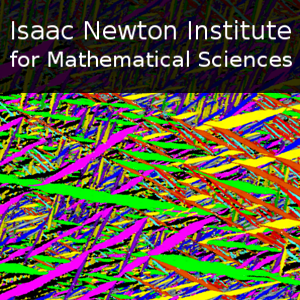Reverse Engineering of Design Principles using Biased Dynamics
48 mins 40 secs,
708.53 MB,
MPEG-4 Video
640x360,
29.97 fps,
44100 Hz,
1.94 Mbits/sec
Share this media item:
Embed this media item:
Embed this media item:
About this item

| Description: |
Cates, M
Tuesday 15th January 2019 - 17:00 to 18:00 |
|---|
| Created: | 2019-01-16 14:48 |
|---|---|
| Collection: | The mathematical design of new materials |
| Publisher: | Isaac Newton Institute |
| Copyright: | Cates, M |
| Language: | eng (English) |
| Distribution: |
World
|
| Explicit content: | No |
| Aspect Ratio: | 16:9 |
| Screencast: | No |
| Bumper: | UCS Default |
| Trailer: | UCS Default |
| Abstract: | Suppose we want to create a material with a certain unusual property. One strategy is to start with a model of an existing material without that property, and bias its dynamics to sample unlikely trajectories for which the atypical property is pres ent. Looking at the biased trajectories, it may be possible to spot some choice of local interactions that would achieve the required effect. I will describe an instance of this in the realm of self-propelled spherical colloids. Here, biasing the ensemble to reduce colloidal collisions creates states in which the propulsion directions have polar order: accordingly, collisions can be reduced by introducing polar interactions. While this particular outcome is relatively obvious, the method is generalizable in principle to more complex cases where genuinely new design principles might emerge. Coauthors: Takahiro Nemoto, Étienne Fodor, Robert L. Jack, Julien Tailleur Reference: Optimizing active work: dynamical phase transitions, collective motion and jamming. T. Nemoto et al, arXiv 1805.02887
|
|---|---|
Available Formats
| Format | Quality | Bitrate | Size | |||
|---|---|---|---|---|---|---|
| MPEG-4 Video * | 640x360 | 1.94 Mbits/sec | 708.53 MB | View | Download | |
| WebM | 640x360 | 684.95 kbits/sec | 244.23 MB | View | Download | |
| iPod Video | 480x270 | 521.85 kbits/sec | 186.01 MB | View | Download | |
| MP3 | 44100 Hz | 249.76 kbits/sec | 89.12 MB | Listen | Download | |
| Auto | (Allows browser to choose a format it supports) | |||||

